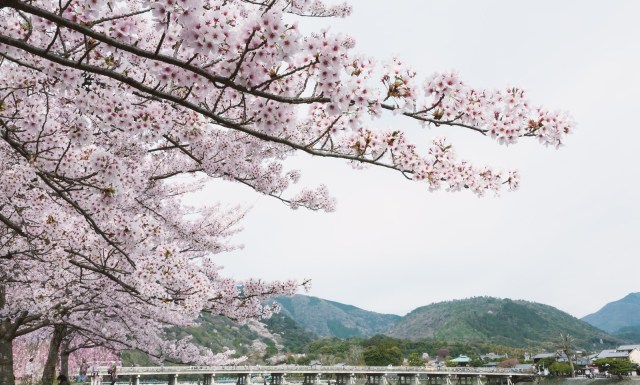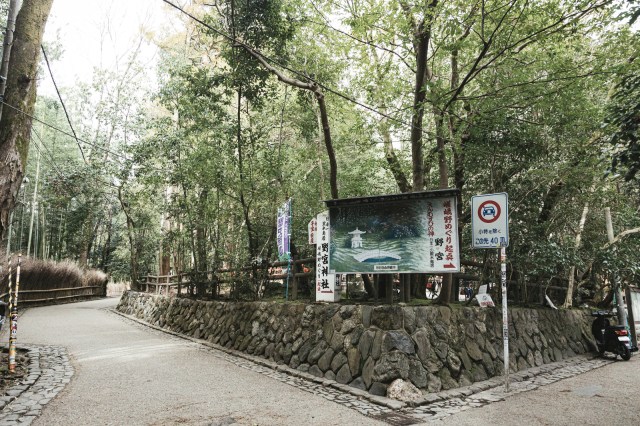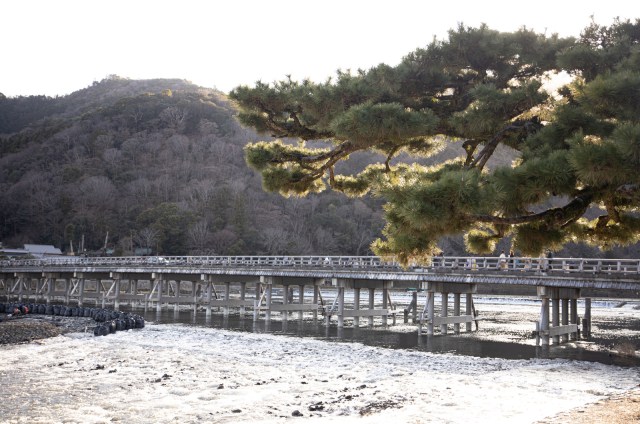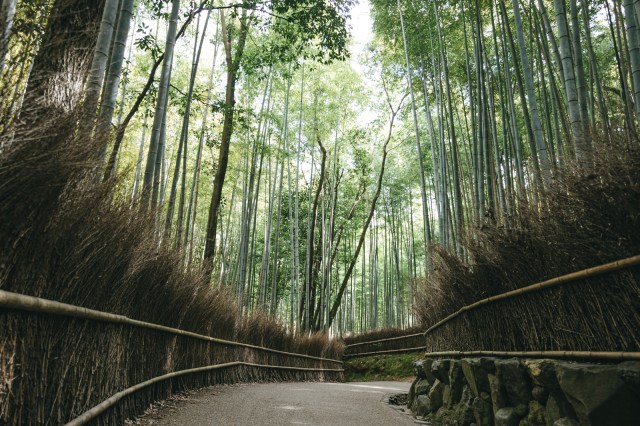
Does Kyoto actually need to advertise to future travelers?
With coronavirus still a threat around the world, tourism in Japan is at an all-time low. One of the hardest hit cities is Kyoto, which relies heavily on the industry for the economic prosperity of both the city and its residents. With fewer foreign tourists than ever, the streets of Kyoto have become empty and many businesses have suffered, so the city has attempted a number of promotions to try to preemptively reignite its tourism industry.
One of those campaigns is a collaboration between JR West and Chinese e-commerce company Alibaba, which held a virtual tourism event for Chinese viewers in the form of a live-streamed tour of Arashiyama, one of Kyoto’s most popular sightseeing spots. The video featured Japanese resident and Chinese native Tokyo Archie, an influencer with over one million Chinese followers who posts content on sightseeing spots and eateries in Japan. It was live-streamed on Alibaba’s video service, Taobao Live, on November 9.
▼ Nearby Arashiyama’s Nonomiya Shrine
The virtual tour, which lasted two hours, started with an introduction of the Sagano Scenic Railway, then proceeded to visit several sightseeing spots around Arashiyama, and even included a ride in a rickshaw. At one point over 100,000 viewers tuned into the livestream, likely making it a very successful project.
The idea was to instill interest in Kyoto, to inspire travelers to visit again once travel restrictions have been lifted. According to an Alibaba representative, Kyoto was selected because Japan always ranks top among desirable travel destinations for Chinese travelers, who do, in fact, make up much of Japan’s tourist numbers–and who are the biggest spenders.
▼ The Togetsukyo Bridge, which connects Arashiyama to the rest of Kyoto
But Japanese netizens were frankly stunned that JR East would host such an event. Many complained that Kyoto had already been suffering from overtourism before the pandemic, making the city and its sighsteeing spots too crowded with “rude” international travelers. No one wants to go back to those days of overstuffed buses and fully booked hotels, so many were scathingly critical of the event.
“Are you kidding me? Just as Kyoto was starting to get back to its beautiful self…Just please stop.”
“No…Kyoto, you really haven’t learned your lesson, have you?”
“They really don’t learn. If you rely on China the same thing will happen as before.”
“Why are they relying so much on international travelers? They never learn. If you’re going to do something like this, why not offer it domestically?”
“Just stop it! [Tourists] ruin the city and are annoying!”
“I just get depressed when I think about all those crowds coming back again. This plan hasn’t considered the residents at all.”
“You idiots can’t see past the short-term profits. The only people who think we need inbound tourism is you.”
“This is the last chance for Japanese people to go to Kyoto.”
▼ The famous bamboo forests of Arashiyama are also considered a “victim” of international tourists, who’ve carved their names into the trunks of the bamboo trees.
It’s important to note that, though a good portion of the crowds in Kyoto do come from China, the overtourism problem is a result of too many international tourists in general, as well as an overabundance of Japanese school groups, who are significant contributors to the overcrowding of the city as well. If you’ve been to Kyoto in the last few years, you’ll understand why was it voted by international travelers as the top big city in the world to visit for 2020…but you’ll also understand why some say the city really doesn’t need to promote itself any more than it already has.
Source: Kyoto Shimbun via Hachima Kiko
Top image: Pakutaso
Insert images: Pakutaso (1, 2, 3)
● Want to hear about SoraNews24’s latest articles as soon as they’re published? Follow us on Facebook and Twitter!




 Japanese travelers are avoiding Kyoto as the city’s number of foreign visitors continues to grow
Japanese travelers are avoiding Kyoto as the city’s number of foreign visitors continues to grow Arashiyama bamboo forest in Kyoto “crying” as tourists vandalise trees
Arashiyama bamboo forest in Kyoto “crying” as tourists vandalise trees Kyoto tourist crowds disappearing due to coronavirus outbreak, creating travel crisis/opportunity
Kyoto tourist crowds disappearing due to coronavirus outbreak, creating travel crisis/opportunity One thing NOT to do in Kyoto if you’re headed there during the vacation period
One thing NOT to do in Kyoto if you’re headed there during the vacation period Get your chills on the rails with Kyoto’s Ghost Train 【Video】
Get your chills on the rails with Kyoto’s Ghost Train 【Video】 McDonald’s new Happy Meals offer up cute and practical Sanrio lifestyle goods
McDonald’s new Happy Meals offer up cute and practical Sanrio lifestyle goods All-you-can-drink Starbucks and amazing views part of Tokyo’s new 170 meter-high sky lounge
All-you-can-drink Starbucks and amazing views part of Tokyo’s new 170 meter-high sky lounge Studio Ghibli glasses cases let anime characters keep an eye on your spectacles
Studio Ghibli glasses cases let anime characters keep an eye on your spectacles More foreign tourists than ever before in history visited Japan last month
More foreign tourists than ever before in history visited Japan last month Kyoto’s 100 Demons yokai monster parade returns!
Kyoto’s 100 Demons yokai monster parade returns! Beautiful Sailor Moon manhole cover coasters being given out for free by Tokyo tourist center
Beautiful Sailor Moon manhole cover coasters being given out for free by Tokyo tourist center Starbucks reopens at Shibuya Scramble Crossing with new look and design concept
Starbucks reopens at Shibuya Scramble Crossing with new look and design concept Mister Donut ready to make hojicha dreams come true in latest collab with Kyoto tea merchant
Mister Donut ready to make hojicha dreams come true in latest collab with Kyoto tea merchant Hamster abandoned at Tokyo ramen restaurant gets new home
Hamster abandoned at Tokyo ramen restaurant gets new home The oldest tunnel in Japan is believed to be haunted, and strange things happen when we go there
The oldest tunnel in Japan is believed to be haunted, and strange things happen when we go there Disney princesses get official manga makeovers for Manga Princess Cafe opening in Tokyo
Disney princesses get official manga makeovers for Manga Princess Cafe opening in Tokyo Beautiful new Final Fantasy T-shirt collection on the way from Uniqlo【Photos】
Beautiful new Final Fantasy T-shirt collection on the way from Uniqlo【Photos】 Is the new Shinkansen Train Desk ticket worth it?
Is the new Shinkansen Train Desk ticket worth it? Foreign English teachers in Japan pick their favorite Japanese-language phrases【Survey】
Foreign English teachers in Japan pick their favorite Japanese-language phrases【Survey】 Japanese convenience store packs a whole bento into an onigiri rice ball
Japanese convenience store packs a whole bento into an onigiri rice ball We try out “Chan Ramen”, an underground type of ramen popular in the ramen community
We try out “Chan Ramen”, an underground type of ramen popular in the ramen community Studio Ghibli releases Kiki’s Delivery Service chocolate cake pouches in Japan
Studio Ghibli releases Kiki’s Delivery Service chocolate cake pouches in Japan Japan’s bone-breaking and record-breaking roller coaster is permanently shutting down
Japan’s bone-breaking and record-breaking roller coaster is permanently shutting down New definition of “Japanese whiskey” goes into effect to prevent fakes from fooling overseas buyers
New definition of “Japanese whiskey” goes into effect to prevent fakes from fooling overseas buyers Our Japanese reporter visits Costco in the U.S., finds super American and very Japanese things
Our Japanese reporter visits Costco in the U.S., finds super American and very Japanese things Studio Ghibli unveils Mother’s Day gift set that captures the love in My Neighbour Totoro
Studio Ghibli unveils Mother’s Day gift set that captures the love in My Neighbour Totoro Foreign passenger shoves conductor on one of the last full runs for Japan’s Thunderbird train
Foreign passenger shoves conductor on one of the last full runs for Japan’s Thunderbird train Domino’s Japan now sells…pizza ears?
Domino’s Japan now sells…pizza ears? New Japanese KitKat flavour stars Sanrio characters, including Hello Kitty
New Japanese KitKat flavour stars Sanrio characters, including Hello Kitty Kyoto creates new for-tourist buses to address overtourism with higher prices, faster rides
Kyoto creates new for-tourist buses to address overtourism with higher prices, faster rides Sales of Japan’s most convenient train ticket/shopping payment cards suspended indefinitely
Sales of Japan’s most convenient train ticket/shopping payment cards suspended indefinitely Sold-out Studio Ghibli desktop humidifiers are back so Totoro can help you through the dry season
Sold-out Studio Ghibli desktop humidifiers are back so Totoro can help you through the dry season Japanese government to make first change to romanization spelling rules since the 1950s
Japanese government to make first change to romanization spelling rules since the 1950s Ghibli founders Toshio Suzuki and Hayao Miyazaki contribute to Japanese whisky Totoro label design
Ghibli founders Toshio Suzuki and Hayao Miyazaki contribute to Japanese whisky Totoro label design Doraemon found buried at sea as scene from 1993 anime becomes real life【Photos】
Doraemon found buried at sea as scene from 1993 anime becomes real life【Photos】 Tokyo’s most famous Starbucks is closed
Tokyo’s most famous Starbucks is closed One Piece characters’ nationalities revealed, but fans have mixed opinions
One Piece characters’ nationalities revealed, but fans have mixed opinions We asked a Uniqlo employee what four things we should buy and their suggestions didn’t disappoint
We asked a Uniqlo employee what four things we should buy and their suggestions didn’t disappoint Princesses, fruits, and blacksmiths: Study reveals the 30 most unusual family names in Japan
Princesses, fruits, and blacksmiths: Study reveals the 30 most unusual family names in Japan “I’m glad I’m Japanese” posters in Kyoto spark outrage among Japanese Twitter users
“I’m glad I’m Japanese” posters in Kyoto spark outrage among Japanese Twitter users Kyoto wants to add extra charges for tourists to use city buses
Kyoto wants to add extra charges for tourists to use city buses Huge price hike for Japan Rail Pass triggers huge drop in foreign travelers who’ll buy it【Survey】
Huge price hike for Japan Rail Pass triggers huge drop in foreign travelers who’ll buy it【Survey】 Jaw-dropping 360° VR Japan tourism promo vid whisks you to a land where tradition meets future
Jaw-dropping 360° VR Japan tourism promo vid whisks you to a land where tradition meets future Iconic Kyoto Tower bathhouse closes due to coronavirus
Iconic Kyoto Tower bathhouse closes due to coronavirus Stay dry with Japan’s top 10 indoor attractions for rainy days, as voted by tourists
Stay dry with Japan’s top 10 indoor attractions for rainy days, as voted by tourists Japan’s 30 best travel destinations, as chosen by overseas visitors
Japan’s 30 best travel destinations, as chosen by overseas visitors Kyoto now has Pokémon manhole covers as Generation 2 comes to the real-life Johto region
Kyoto now has Pokémon manhole covers as Generation 2 comes to the real-life Johto region Japanese prefectural governor wants foreign tourists to pay special extra fee
Japanese prefectural governor wants foreign tourists to pay special extra fee The number 1 ‘most satisfying’ city in the world is….TOKYO!!!
The number 1 ‘most satisfying’ city in the world is….TOKYO!!! Japanese government wants to encourage wealthy foreigners to travel deeper into Japan, NHK says
Japanese government wants to encourage wealthy foreigners to travel deeper into Japan, NHK says Explore Kyoto tourist site Fushimi Inari Taisha shrine with Unreal Engine 4 【Video】
Explore Kyoto tourist site Fushimi Inari Taisha shrine with Unreal Engine 4 【Video】 Kyoto admits to paying celebrities 500,000 yen per tweet to talk about how great the city is
Kyoto admits to paying celebrities 500,000 yen per tweet to talk about how great the city is What’s the top country people want to visit after the pandemic? Japan, survey says
What’s the top country people want to visit after the pandemic? Japan, survey says China’s “Little Kyoto” shut down by government after complaints of Japanese culture “invasion”
China’s “Little Kyoto” shut down by government after complaints of Japanese culture “invasion” New York Times makes a surprising pick for the best city to visit in Japan
New York Times makes a surprising pick for the best city to visit in Japan
Leave a Reply